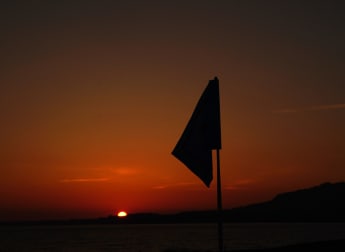By Mitchell Platts, Director of Corporate Affairs & Public Relations
It takes a special talent to appreciate an examination such as that set by the links at Royal Lytham & St Annes where the 130th Open Championship will be played on July 19-22.
Tom Watson, who won no fewer than five Open Championships, one short of the record held by Harry Vardon, said: “Royal Lytham & St Annes is an unheralded British Open course. But I like it very much. It was there in 1979, when Seve was, that I changed my mind on Open venues. I didn’t play well, I didn’t like the bouncing, running shots but I began to understand the type of play it required to be successful.”
Severiano Ballesteros, of course, remembers well walking down the 18th fairway of these famous Lancashire links on the final day of the Open Championship in 1979. “I told Dave Musgrove, my caddie, ‘Well, I think we win the Open,’ said Seve. “Dave looked at me and said: ‘Yes, but you must take two putts from where you are because I bet that somebody would be under par for the week and you are the only one with that chance. So make sure you take two putts – OK!’”
Ballesteros did as instructed before the thrill of winning his first Major Championship triggered tears of happiness. “It was a very emotional moment,” Ballesteros said. “All my brothers (Baldomero, Manuel and Vicente) were there. Any time you walk down the last hole at the Open, whether you win or not, there are many people clapping and cheering that the atmosphere makes you feel so good. But if you are the champion then it is a fantastic feeling.”
Ballesteros felt that “fantastic feeling” at St Andrews in 1984 – “Winning the Open at the Home of Golf is something very special,” he said – and then again back at Royal Lytham & St Annes in 1988. In 1979 Ballesteros scored 73-65-75-70 for a one under par total of 283 to finish three ahead of Ben Crenshaw and Jack Nicklaus and four in front of Mark James. He improved on that total by ten shots in 1988 with scores of 67-71-70-65 for 273 – two ahead of Nick Price and six in front of Nick Faldo.
Only days before Ballesteros set out to win his third Open Championship, he provided a fascinating insight to me of what it would take to be crowned champion. He believed then that the sand wedge could be the most important club in the bag. “There are so many bunkers that sooner or later you will be in some of them. The outward nine is usually easier and you must make your score there. You need to have a few shots in the bank. If it does blow hard then you will see some high scores,” he said.
In fact the conditions were testing in 1988 whereas in 1996 it was hot and sunny throughout the 125th Open Championship which was won by Tom Lehman with scores of 67-67-64-73 for a 13 under par total of 271 – two ahead of Ernie Els and Mark McCumber and three in front of Nick Faldo. Incidentally Tiger Woods, the defending champion this year, won in 1996 the silver medal for leading amateur – he finished tied 22nd after scores of 75-66-70-70 – and his total of 281 not only beat by ten strokes the winning aggregate recorded by Bobby Jones in 1926 but also equalled the Championship record by an amateur set by Iain Pyman at Royal St George’s in 1993.
Where Lytham, which in 1986 held its centenary, is unique is that it is the only Open Championship course which starts with a par three – flanked on the right by the railway line. Gerald Micklem in his foreword for “The Lytham Century” wrote: “What makes Lytham such a good and difficulty test? Going out, if the wind is against you from the left, the railway line is a constant threat; coming back against the wind, it is just the sheer length of some of the par fours, but perhaps, above all, wherever the wind may be, it is that so many of the greens are slightly elevated and unless the ball is hit right into the middle, it is likely to run off into one of the may bunkers or grassy hollows.”
This, of course, is why Ballesteros identified the sand wedge as such an important club and although since 1988 there have been many technicological advances in golf equipment it is still interesting to record how Ballesteros described each hole for me as the golf correspondent of The Times.
It should, of course, be pointed out that changes were made for 1996 and that for this year’s Championship a programme for the removal of popular trees – they are not an indigenous species and they are inappropriate for a links environment – was embarked upon in addition to alterations made to holes and bunkers.
The changes to the course, including the new bunkering (in all 14 bunkers have been added bringing the total to 196), were designed and carried out under the supervision of Stan Eby of European Golf Design. Graham Cochrane, Chairman of Green and Championship Committees, said: “We feel that Stan has done a wonderful job of capturing he essence of the course – his alternations have blended in exceptionally well and look as though they have been there since the course was first laid out.”
European Golf Design was established in 1992 as a joint venture between The European Tour and IMG in order to provide a golf course design service for both parent companies and their various tournament and client based golf projects. Since then, their skill have become recognised by many other clients, not only those interested in tournament golf.
Stan Eby joined European Golf Design from the Chicago based firm of Golf Course Architect, Dick Nugent, Past President of the American Society of Golf Course Architects. A graduate of Iowa State University with a degree in Landscape Architecture, he joined European Golf Design in 1992.
The bulk of the winter programme involved the renovation of bunkers. Cochrane added: “Despite the very wet winter, 70 bunkers have had the revetted walls rebuilt and the rest will be trimmed into shape. The turf for the bunker wall is thatchy turf taken off our own practice ground and short course. These areas are then relaid with bought in turf, again of the highest quality. Paul Smith, our new Head Greenkeeper, is maintaining and extending Jimmy MacDonald’s policy of sparse use of fertilisers, chemicals and water and maximum aeration and verticutting. This will maintain and improve the links character of the course.”
Severiano Ballesteros’s description of Royal Lytham & St Annes as printed in The Times on July 14, 1988, is featured below with comments by Stan Eby on the changes for which he has been responsible and with the yardages for 1988 and as they will be this year.
Hole 1 (Par 3)
1988: 206 yards
2001: 206 yards
In my opinion, it is a straight forward opening hole. A lot of golfers are not happy having a par three at the start of a round, especially in the Open. The hardest part is judging the wind because the tee is set back in the trees. It is only a five or six-iron, unless the wind is against, and you can only make trouble for yourself by missing the green.
Hole 2 (Par 4)
1988: 437 yards
2001: 438 yards
The dangerous place to go is to the right because of the trees, the railway line and the out-of-bounds. But I do not like the thought of going left because there are two difficult bunkers. So it is very important to hit the fairway, perhaps a touch to the right side, to have the best shot into a green which is small and difficult. Probably an iron of the tee.
Hole 3 (Par 4)
1988: 457 yards
2001: 458 yards
Accuracy is the key again here. This is the time it is probably best to favour the left side of the fairway since there are more undulations to the right, with the railway line also still there. It is a hole where you can make a birdie, if you hit the drive long and straight.
Hole 4 (Par 4)
1988: 393 yards
2001: 392 yards
Because the hole doglegs to the left, with a couple of bunkers at the elbow, it is almost as if those hazards are set in the middle of the fairway. In my opinion, it is better to hit an iron off the tee, even if the hole is played into the wind, which normally is the case. The green is well guarded so you must set yourself up to approach it from the best angle, which is probably the right side of the fairway.
Hole 5 (Par 3)
1988: 212 yards
2001: 212 yards
This hole often plays longer than it looks. It is a very good short hole because it is extremely well protected by four bunkers on the left and two bunkers on the right. Big problems if you come up short.
Hole 6 (Par 5)
1988: 490 yards
2001: 494 yards
The green has been moved about 15 yards to the left since 1979. It will make for a more difficult approach shot and the drive will now need to be hit a little more to the right. The deep bunker to the left of the fairway must be avoided. It is a hole where you will hope to leave the green with a birdie.
NB: For 1996 the front left bunker was deepened and a new bunker constructed behind the green. There is now an enlarged tee which has been moved further to the left. The fairway is out further to the right, and these changes will increase the angle of the dog-leg.
Hole 7 (Par 5)
1988: 549 yards
2001: 557 yards
To the right we have the railway line again, but it is not a threat. The problems, as so often at Lytham, are caused by the bunkers. A cluster of them are to the right, so it is far better to miss the fairway on the left. But if you are too cautious, then there is also a bunker set that side to trap you. It is still a hole where you can make a birdie.
Stan Eby: Two new bunkers have been added to the left of the seventh about 320 yards off the tee.
NB: An old bunker has been re-opened further down the left of the fairway some 104 yards short of the green.
Hole 8 (Par 4)
1988: 394 yards
2001: 419 yards
If the wind is blowing, you can feel it at this point more that anywhere else on the course. There really is no need to take a wood as the important thing is to be accurate off the tee. The green is elevated and it is easy to misjudge the approach shot. You cannot afford to do so with three bunkers short of the putting surface and one either side of it.
Hole 9 (Par 3)
1988: 164 yards
2001: 164 yards
There are a lot of bunkers here! Ten in total – it is unbelievable. It is so easy to go into any one of them which is why it is a good hole. Very important, then, to hit a positive shot on the right line.
Hole 10 (Par 4)
1988: 334 yards
2001: 335 yards
I regard this as a very tough hole. In length it is short but it can be very severe going into the wind. I remember that I was twice in the front right bunker in 1979. This hole also doglegs slightly to the right so position is important off the tee with a precise shot needed to find the elevated green.
Hole 11 (Par 5)
1988: 542 yards
2001: 542 yards
I can tell you one thing; against the wind, you cannot reach this hole in two shots. Some may think it is worth gambling by cutting the corner and going over the two bunkers down the left. You will be looking, of course, for a birdie if the wind doesn’t blow.
Stan Eby: Two bunkers have been re-opened on the left side of the 11th fairway where poplar trees were removed, about 130 yards from the green.
Hole 12 (Par 3)
1988: 198 yards
2001: 198 yards
This hole I like very much although it is tough. It often plays a three or four-iron and with six bunkers surrounding the green it is a small target. You will give yourself a very difficult shot if you miss on the right. I was down there three times in 1979 so I should know.
Hole 13 (Par 4)
1988: 342 yards
2001: 342 yards
Here you can almost reach the green. But there are big, big bunkers 25 yards short of it. In fact, the hole has 16 bunkers! I usually lay up with a two-iron and hit a little pitching wedge. On the last day in 1979 I hit my driver and the ball struck the top of the bunker 70 yards short of the green and fell back down. My sand wedge caught a little slope on the green and the ball rolled just off. It was still only 20 feet away – I made it for a birdie.
Hole 14 (Par 4)
1988: 445 yards
2001: 445 yards
Some see this as a fairly comfortable hole bit I think it is a very difficult tee shot. You want to be down the left centre of the fairway. But the wind tends to blow everything from left to right towards a lot of humps. That is not the place to be as you then go at a small green which is hard to hit.
Stan Eby: The two large humps to the right of the 14th fairway have been removed. The area has been recontoured and two new bunkers added at 250 and 275 yards off the tee respectively. The left side of the 14th fairway was flat and has been recontoured.
Hole 15 (Par 4)
1988: 463 yards
2001: 465 yards
In my opinion, it is the hardest hole. Even if you hit the fairway, there are so many undulations that you don’t know what kind of lie you are going to get. In the third round in 1979 I tried to hit a low two iron, but the ball hit one of the humps. It didn’t go too far and I had a difficult third to the green. The green seems to slope from front to back and left to right so throwing the ball off it.
Stan Eby: The area to the right of the fairway beyond the original drive bunker has been recontoured and three bunkers added. The furthest one is about 300 yards off the tee. A bunker has been added adjacent to this on the left hand side of the fairway.
Hole 16 (Par 4)
1988: 357 yards
2001: 359 yards
They call it my “car park” hole. I call it the hole with a thousand bunkers. It seems that way, although there are only 16. I hit my drive to the right on the last day in 1979. I knew the pin was to the left so I wanted to come in from the right. I will admit it went further to the right than I intended and into the car park.
Hole 17 (Par 4)
1988: 462 yards
2001: 467 yards
Another very tough hole with a lot of bunkers to the left. You must be very careful not to go in them but at the same time you cannot go too far right. If you do then you face an even tougher shot over dead ground to the green. You must go with the driver off the tee but it will probably still be a three of four iron after that.
Stan Eby: On the right hand side two bunkers have been added, the first bunker ‘paired’ with an existing bunker 215 yards off the Championship tee and the furthest one at 290-300 yards.
NB: A new Championship tee (improved alignment) was constructed for 1996 when there were new bunkers left and right of the fairway (both used to be grassy hollows.)
Hole 18 (Par 4)
1988: 412 yards
2001: 412 yards
This hole is very well protected right and left, and with a cross-wind it can look very narrow. The tee has also been taken 30 yards back so that the fairway bunkers will come more into play. The green, of course, is surrounded by bunkers and the clubhouse is right behind it.







